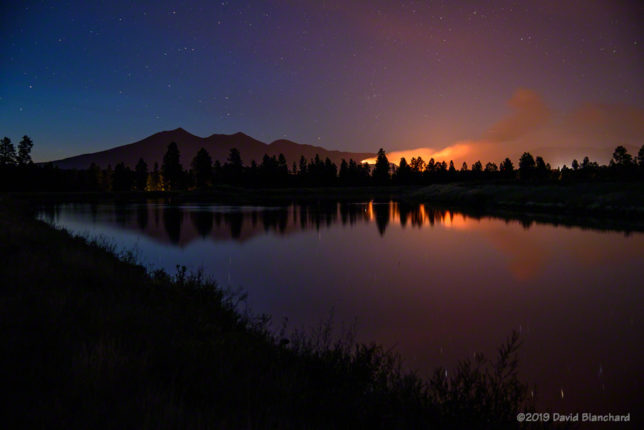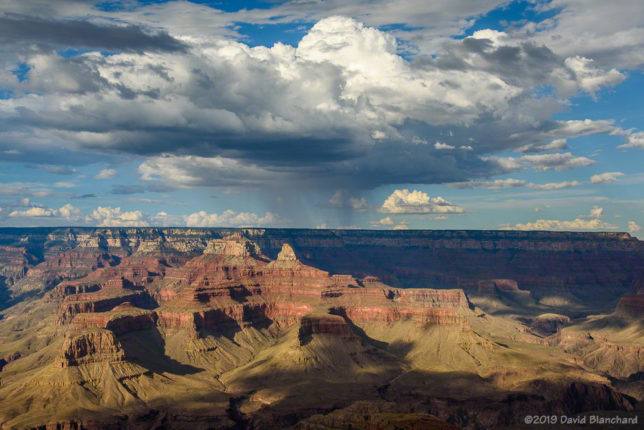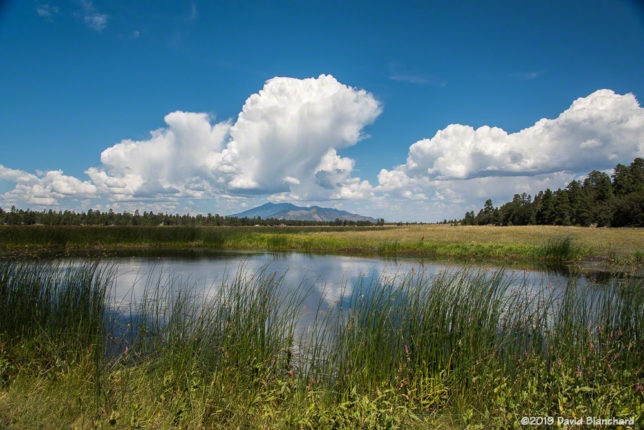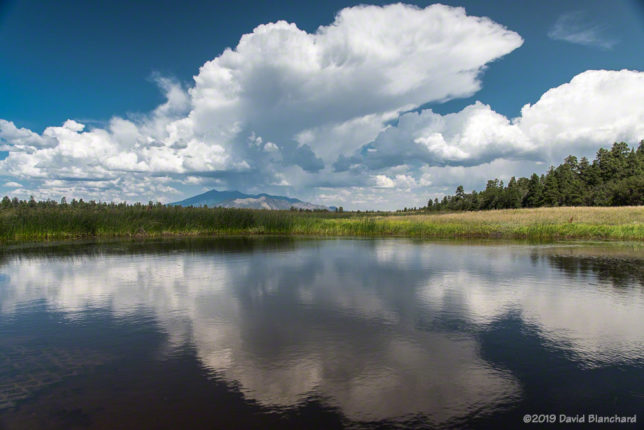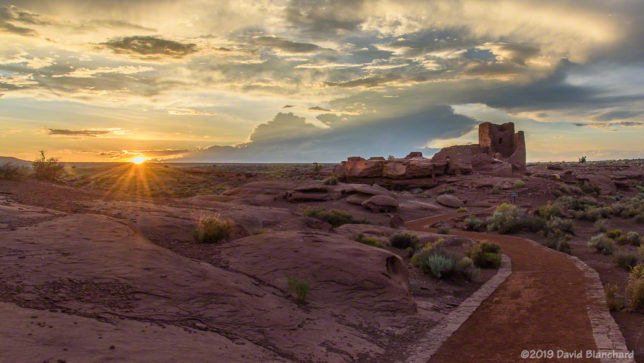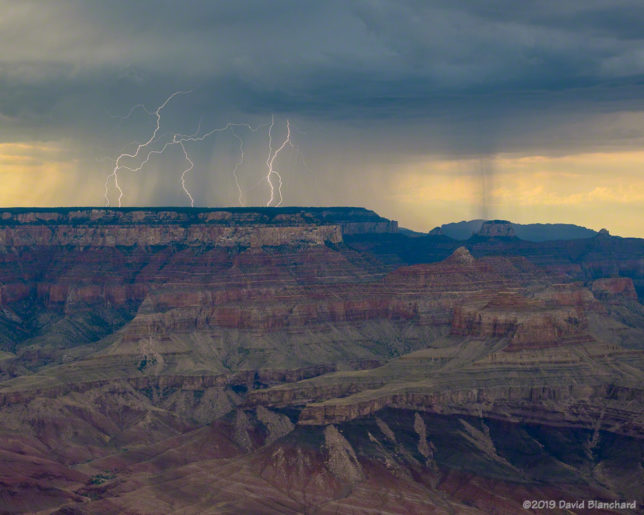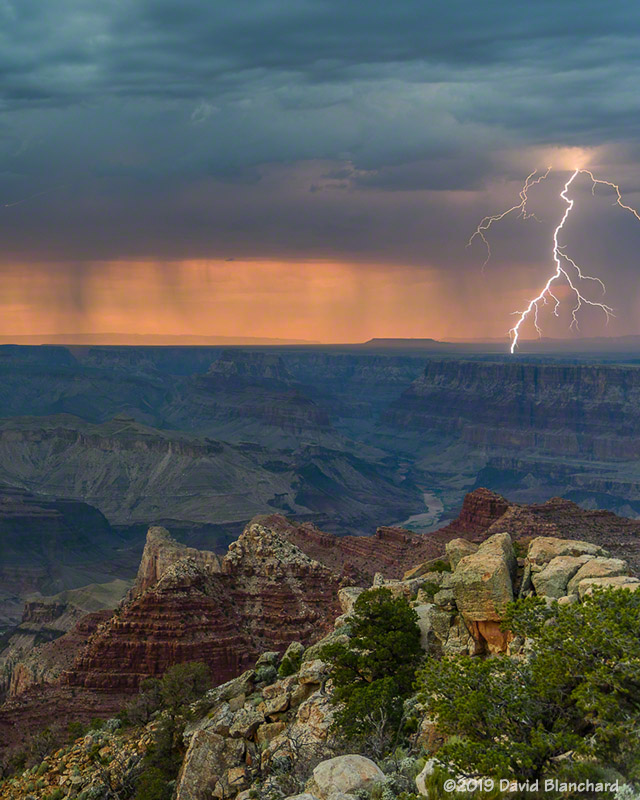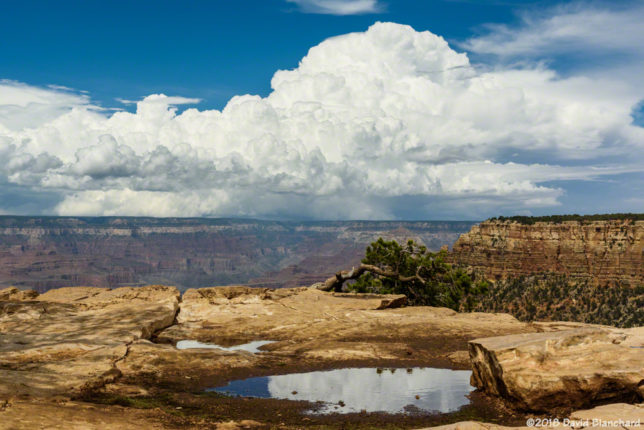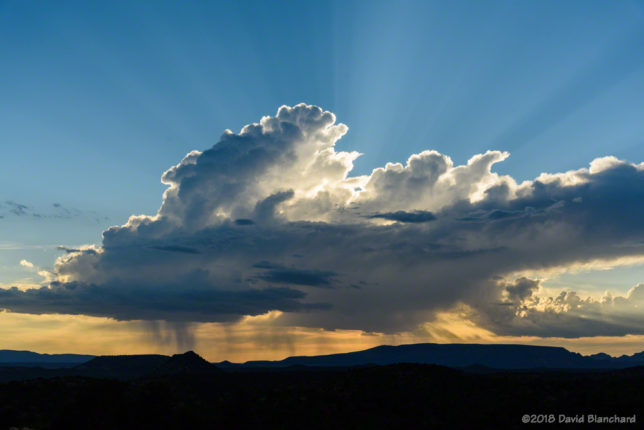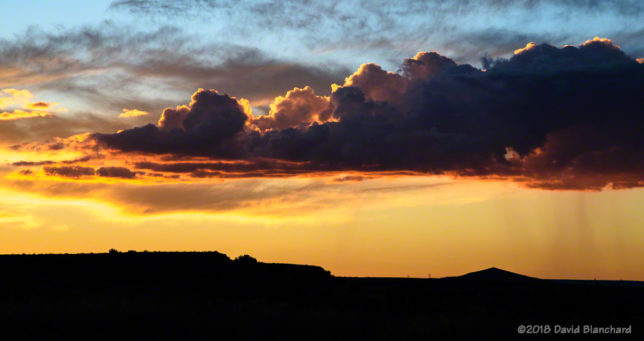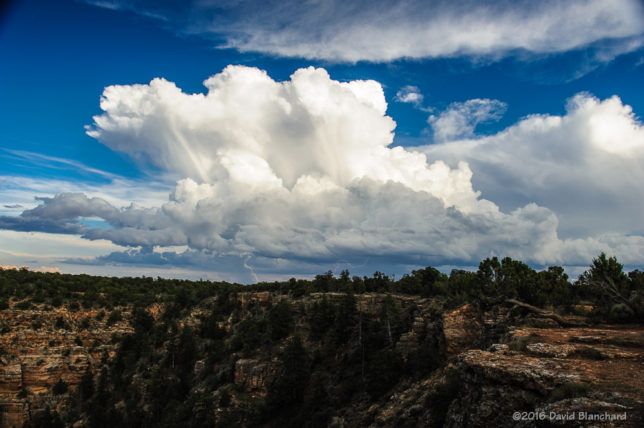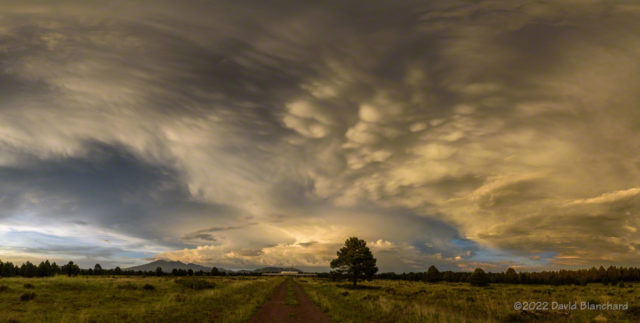
Yesterday (01 August) had only scattered thunderstorm activity for much of the day. However, radar indicated a weak convergence boundary near Flagstaff so there was a chance of late afternoon storms developing close by. And so it did happen.
A strong storm was located east of Flagstaff just before and after sunset. As the sun dropped to the horizon the underside of the storm and anvil cloud was lit with golden hour light. This is a panorama of that view. It was taken with a ultra-wide-angle lens in portrait mode with ten individual images that were stitched together.
Beautiful!
